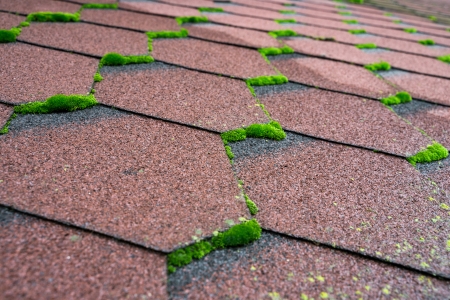The Intriguing World of Fire Moss and Its Impact on Asphalt Shingle Roofs

In recent years, homeowners and roofing professionals have become increasingly aware of an unusual yet fascinating phenomenon known as fire moss. Unlike its non-threatening name, fire moss is not a dangerous plant but a type of airborne algae that can find its way onto asphalt shingle roofs. This seemingly innocuous organism has been the subject of much curiosity due to its potential impact on the integrity and aesthetics of roofs.
Understanding Fire Moss:
Fire moss, scientifically known as Gloeocapsa magma, is a species of algae that thrives in warm and humid environments. It typically appears as dark streaks or discoloration on roofs, particularly those made of asphalt shingles. Despite its name, fire moss does not pose an immediate threat of combustion; rather, it gets its name from the fiery appearance it can give to affected surfaces.
Effects on Asphalt Shingle Roofs:
- Aesthetic Concerns:
Fire moss can mar the visual appeal of asphalt shingle roofs, creating unsightly dark streaks or blotches. This aesthetic degradation is a primary concern for homeowners who take pride in the appearance of their properties. - Reduced Reflectivity:
Asphalt shingles are designed to reflect sunlight and heat away from the roof, contributing to energy efficiency in the home. The presence of fire moss can reduce the shingles' reflective properties, potentially leading to increased heat absorption and higher indoor temperatures. - Reduced Reflectivity:
Fire moss may contribute to the aging of asphalt shingles by promoting moisture retention. The algae can trap moisture, which, over time, may compromise the structural integrity of the shingles and decrease their lifespan. - Reduced Reflectivity:
While fire moss itself does not cause immediate damage, the moisture retention it facilitates can create an environment conducive to the growth of other fungi or organisms. This may lead to more serious issues like mold or mildew, which can compromise the integrity of the roofing material.
Prevention and Treatment:
- Regular Maintenance:
Routine roof maintenance, including periodic cleaning and inspections, can help prevent the buildup of fire moss. Keeping gutters clean and ensuring proper drainage also plays a crucial role in minimizing moisture accumulation. - Biocide Treatments:
Professional roofing contractors often use biocide treatments to eliminate and prevent the growth of algae and moss. These treatments can be applied to the roof surface to inhibit the development of these organisms. - Improved Ventilation:
Adequate roof ventilation is essential to reducing humidity and preventing the conditions that favor the growth of fire moss. Proper ventilation allows moisture to escape, helping to maintain a dry and healthy roofing environment.
While fire moss may not pose an immediate danger to asphalt shingle roofs, its presence can lead to aesthetic concerns and potential long-term issues. Homeowners are encouraged to be proactive in maintaining their roofs through regular roof cleaning, inspections, and the use of preventive treatments. By taking these measures, homeowners can preserve the functionality and visual appeal of their asphalt shingle roofs for years to come.
Latest Tips & Articles
-
Solar Panel Cleaning: How Often in Humid Central Alabama?
Solar panels work hard in Tuscaloosa’s humid, storm-prone climate. Spring pollen blankets everything, summer brings sudden downpours, and fall can add leaf stains. The result is a thin film that scatters light and cuts production. If you’re wondering how often to schedule cleaning, this guide explains […]
-
Tuscaloosa Concrete Cleaning: Oil Stain Removal That Actually Works
When it comes to keeping your home or business looking its best, one of the most stubborn challenges is oil stains on concrete. Whether it’s a driveway, parking pad, or garage floor, these unsightly marks can make even the cleanest property look neglected. Fortunately, professional concrete […]
